Apples are a widely popular fruit loved by many people all over the world. More than 100 varieties of apple are grown commercially in the United States and more than 7,500 varieties are grown worldwide. [Source: University of Illinois Extension].
Just like many fruits, apples can be in shades of Green, Red, Orange, Yellow or Golden with different flavors and textures. Green apples usually have a bright or emerald green skin that can vary in shade from pale green to a deeper, almost yellow-green hue. Their skin may also feature slight variations such as speckles or patches of yellow or red.
In the modern-day, the green apples are still considered a versatile variety, bearing a sweet and acidic flavor. These apples too can be eaten fresh or used in a number of culinary preparations.
In this article, let us talk about different types of green apples, their characteristics and where they are grown.
List of Different Types of Green Apples
- The Granny Smith Apples
- The Newtown Pippin Apples
- The Rhode Island Greening apples
- Greensleeves apples
- Crispin (Mutsu) Apples
- Cornish Gilliflower Apples
- Anna Apples
- Smeralda Apples
- Green Dragon Apples
- Greenstar Apples
- Grimes Golden apples
- Gravenstein apples
- Ginger Gold
- Antonovka
- Catshead apples
- Lodi Apples
- Bramley Apples
- Calville Blanc d’Hiver Apples
- Northern Spy Apples
- Ashmead’s Kernel Apples
- Shizuka Apples
Description And Facts
The Granny Smith Apples
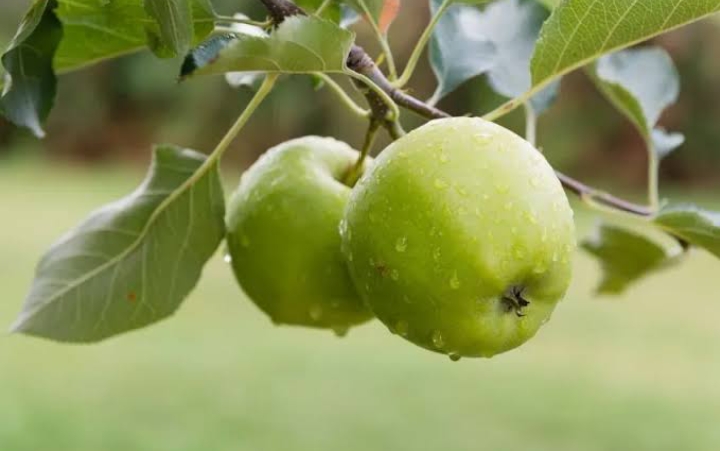
The tree was first discovered in Australia growing as a chance seedling in a compost pile on the orchard of farmer Maria Ann “Granny” Smith in 1868. This variety was introduced into North America in the 1970s.
The fruit is firm with a light green skin. The skin is usually smooth. In some cases, you may notice some red blush or speckles on the skin, as a result of exposure to sunlight. In colder climates, the apples may also develop a yellow to pink blush.
Unlike other popular sweeter apple varieties like Red Delicious or Golden Delicious, the flesh of this apple is white and juicy with a sharp-tangy taste profile.
These apples are grown in many regions around the world. In many places, they are harvested between June and August. In other places, they are available year-round.
The Newtown Pippin
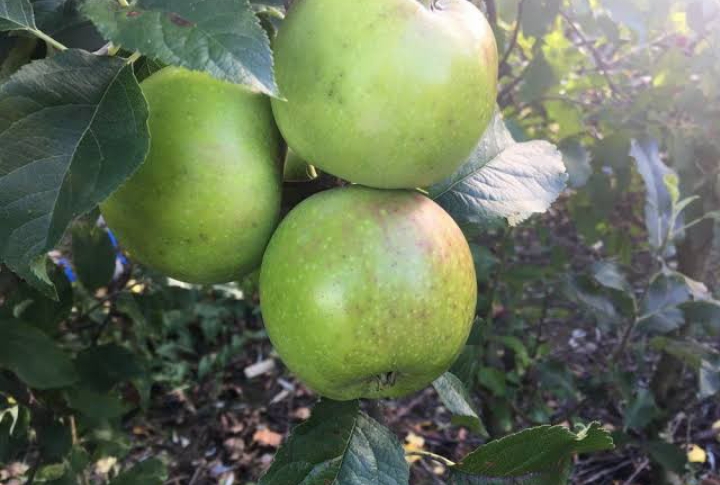
The Newtown Pippin, also known as Albemarle Pippin is a North American variety. It is considered one of the oldest apple varieties in the United States, with origins dating back to the 18th century. The apple is named after Newtown, which is now Elmhurst, in Queens County, New York, where it was first discovered.
The apple fruit has a greenish-yellow skin that can develop some russeting or brownish spots at maturity. The flesh is yellow and crisp. Its flavor is balanced between sweet and tartness. The flesh also has a pleasant aroma that some people often describe as floral with notes of pineapple.
Newtown Pippins grow best in warmer climates where it is usually harvested between October and November. It can be stored for several months when kept in cool, dry conditions. Over time, the flavor of the apple can mellow and improve while in storage.
The Rhode Island Greening apple
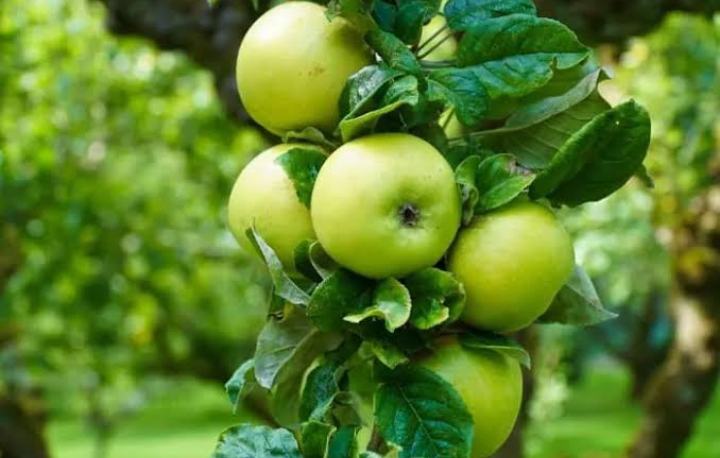
The Rhode Island Greening apple is an oldest American apple cultivar. It originated in the state of Rhode Island in the 17th century. The exact parentage of the apple is unknown. It is believed to be a chance seedling that was discovered on the property of a Mr. Green in Newport, Rhode Island.
The tree grows fast and produces fruit biennially. The skin of these apples is bright green, but develops a yellowish hue as it ripens. The flesh is firm and creamy. The flavor is very tart when picked, but mellows and sweetens as it ages. This apple is particularly good for cider-making.
The cultivation of this heirloom or heritage apple variety has declined over the years in very many places in North America. The tree itself is vigorous and bears fruit regularly. Today it is primarily found in orchards in northeastern United States.
Also Read: Different Types of Yellow Apples
Greensleeves apples
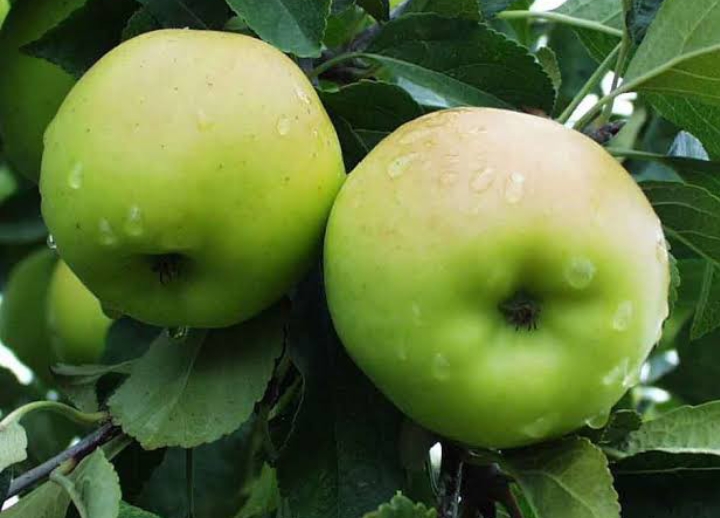
Greensleeves apples, also known as Cevaal or Bretagne originated in the United Kingdom. It is a cross between the golden delicious and a Scottish apple known as james grieve. Greensleeves are essentially not a commercial variety. It is just an apple for home gardening. Its fruit can be consumed fresh as a dessert or used in home cooking.
The apple fruit has a green skin during the growth stage. The skin is smooth and sometimes has a few small lenticels (pores) scattered across its surface. Depending on climate, the green skin, can remain green at maturity or turn green-yellow.
The flesh is creamy white in color, firm and crisp. It is neither excessively fibrous nor mealy, and while eating it, it offers a pleasant mouthfeel. The apple holds its shape well when cooked. It can be used baking in pies, tarts and crumbles.
Greensleeves apple trees grow vigorously and have a moderate resistance to diseases like apple scab and mildew. They especially grow well in temperate climates. Most often the apples are ready for harvest between July and October.
Crispin apples
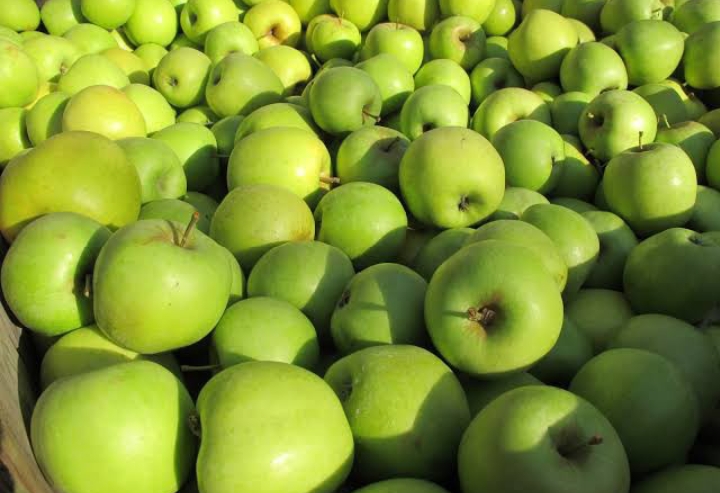
Crispin apples, also known as Mutsu apples originated in Japan. They are named after the Mutsu Province, which is now part of the Aomori Prefecture. This apple is a cross between the Golden Delicious and Indo apple.
The skin of the apple is smooth and green in color. It sometimes features a red or yellow blush on the side exposed to the sun. The flesh is creamy white, crisp and firm. The taste is balance between sweetness and tartness. They too have some scent that is mildly fragrant.
Mutsu or Crispin apples ripen around the end of September, although one problem with these trees is that they may only produce fruit biennially. The trees are also self-sterile and needs to be planted alongside other apple trees or in proximity to other varieties for pollination.
Cornish Gilliflower apples
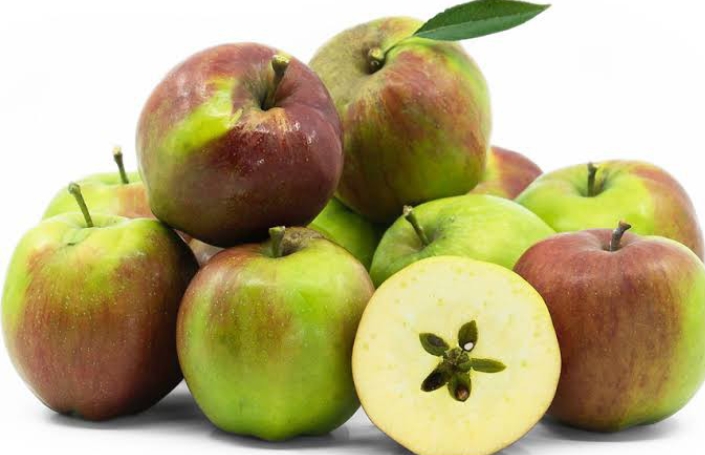
Cornish Gilliflower apples are native to England and were discovered in a cottage garden in Truro, a city within Cornwall in southwestern England. The apple fruits are characterized by unusual coloring and sharp flavors.
The skin is pale greenish-yellow color with patches of red blush or striping. As the apple matures, it may develop a deeper golden hue and occasional russeting. The flesh is yellow in color. It is is dense and dry with a crunchy consistency. The flesh also has a fibrous core filled with tiny black-brown seeds. Overall, the apples release an aromatic floral and clove-like scent when sliced.
These apples are harvested in late autumn or early winter. They can be enjoyed immediately or stored for several months. As they mature, their flavors intensify. The trees of this apple variety can just thrive even in temperate climates.
Anna Apples
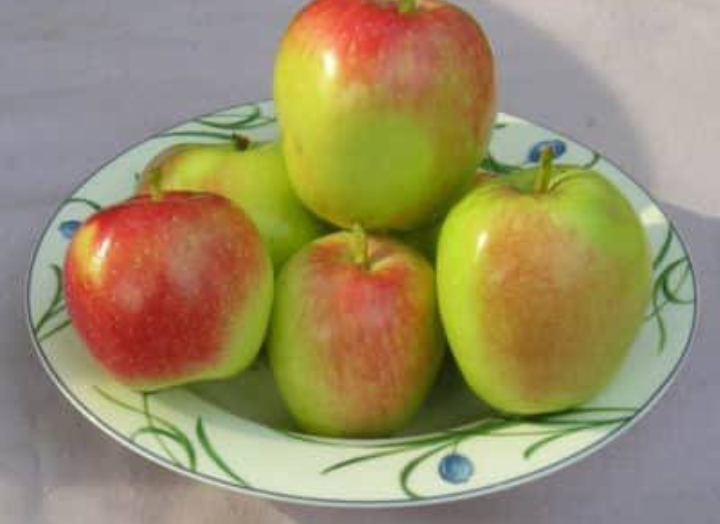
The Anna apple was developed in the 1950s at the Ein Shemer kibbutz, located in the northern part of Israel. The apple was developed by Abba Stein. The purpose behind breeding was to develop a variety that could thrive in areas with nearly tropical climates, where traditional apple varieties, such as Golden Delicious, might struggle to grow.
The variety was introduced to the United States in 1959 and since then it has been a popular variety, particularly in Florida. The skin is green or greenish-yellow with a red flush or striping, covering approximately fifty percent of the fruit’s surface.
Their flesh is juicy with a fine-grained texture. Its flavor is often described by some people in Florida as crisp and mildly tart.
Anna apple trees are self-sterile, for effective pollination, they need to be grown near other apple trees like Dorsett Golden, Ein Shemer, or Tropic Sweet.
These apples are definitely early-season apples. They are ready for harvest during spring time. While they can be enjoyed fresh, they can be put to culinary uses, such as salads, pies, sauces and baking.
Also Read: Major Types of Lemon Trees
Smeralda apples
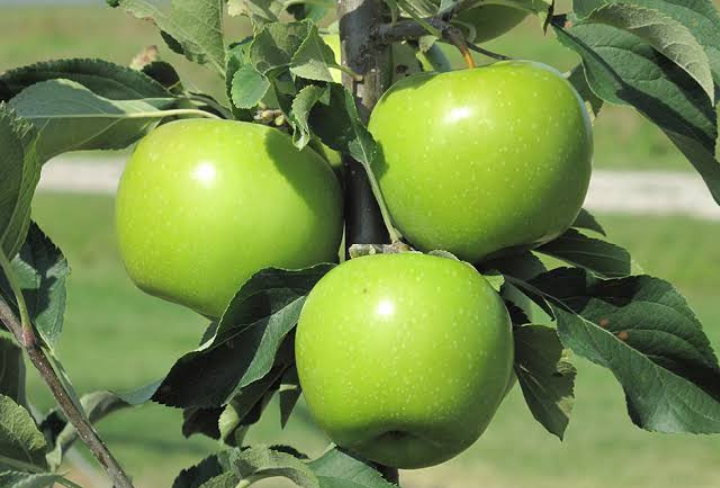
Smeralda apples are predominantly grown in the Trentino-Alto Adige region of northern Italy. They are too cultivated in places such as the United States and Chile. The apples are available from late summer through early winter.
The fruit is of moderate size and fits comfortably in the palm of the hand. It has a uniform green color with a yellow flesh. The flesh is dense with a crunchy taste, feeling fresh in the mouth with each bite, probably because of its high sugar content and elevated acidity. The taste is similar to ‘Granny Smith’ but sweeter and more fragrant.
In many places where they are grown, the apples are ready for harvest between August and October. Other than fresh eating, the apple can also work well in salads, baking and cooking applications, such as pies, tarts, cakes and sauces.
Green Dragon Apples
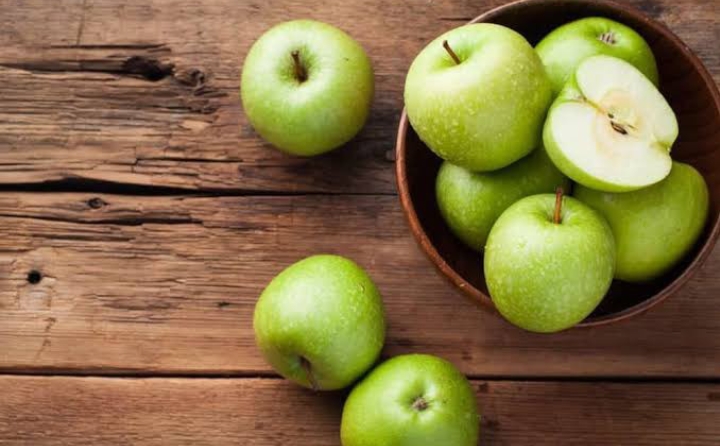
Green dragon apple is actually a new cultivar characterized by vibrant green color and excellent flavor profile. The apple is believed to be a cross between the Golden Delicious and one of the Cripps Pink apple varieties. They are commonly grown and harvested locally in the Pacific Northwest.
The green hue of Green Dragon Apples can vary from a bright, almost neon green to a softer, more muted shade. The color covers the entire surface of the apple, including the top and bottom. The taste can be described as sweet and tangy taste with a hint of citrus and tropical notes. The sweetness is actually well-balanced, not that overpowering.
The trees of this apple variety have similar characteristics to other apple tree cultivars. The maturation and harvesting occurs in late summer or early autumn. The fruits can be eaten fresh out-of-hand or sliced and tossed into fruit or leafy green salads.
Greenstar Apples
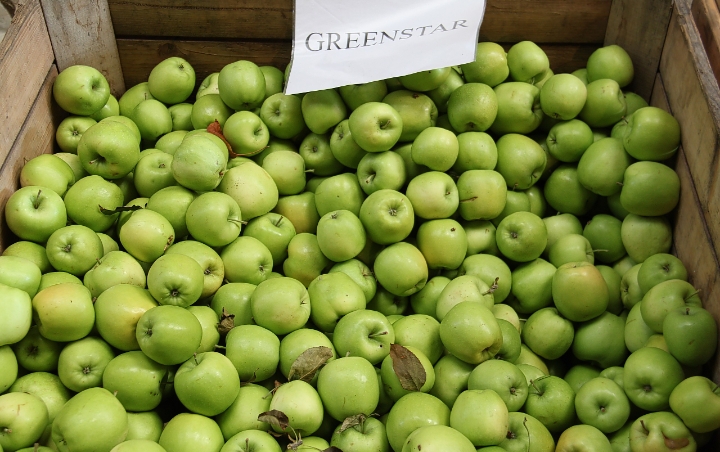
Greenstar apples were developed through a collaborative effort between Cornell University’s apple breeding program and the New York State Agricultural Experiment Station. The variety was first introduced in the 1990s.
The skin of this apples can be lime to deep green in color. Unlike some other apple varieties that may have a rough skin, Greenstar have a uniformly smooth surface. The flesh is white, tinged with green and has an aqueous consistency. It also remains white, even after slicing, and encases a small central core filled with tiny black-brown seeds.
While the apple might not be extremely juicy like some other apple varieties, it still offers enough juice for refreshing and hydrating eating experience. When you cut or bite into the apple, you may notice a mild and pleasing apple scent.
Grimes Golden apples
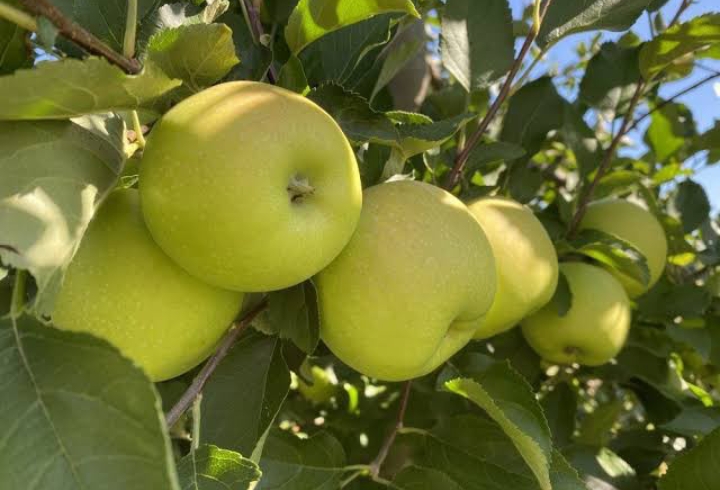
The ‘Grimes Golden’ apple, also known simply as ‘Grimes’, is a heirloom variety that has been around since the early 1800s. It is named after its original cultivator, Thomas Grimes, who discovered the apple growing as a seedling on his farm in Brooke County, West Virginia.
The apple’s skin is smooth, somewhat matte, and yellow-green in color. The skin may develop light russeting. The flesh is aqueous with a snappy consistency. It also releases a grassy aroma and has a high sugar content.
Grimes Golden apples are a self-fertile variety with fruit that ripens in the mid to late season. The apples can also be chopped into salads, shredded into slaws, used as a fresh topping over oatmeal, porridge, and grain bowls or blended into smoothies.
Gravenstein apples

Gravenstein apples are believed to have originated in the 17th century in the Gravenstein region of Denmark. The apple is thought to be a result of natural crossbreeding between local Danish apple varieties. The exact parentage of the apple is unclear.
The apple’s skin is delicate, greenish in color with some bumps. The base color of the skin ranges from green to yellow, depending on the ripeness of the fruit. The flesh is white to pale yellow. It is aqueous with a crisp consistency. The flesh also releases an aromatic floral and fruity scent. Its flavor is tart lingering with honeyed notes. When bitten into, the flesh produces a burst of juice.
Gravenstein apples are only available in season and have a notoriously short shelf life. Today, they are grown in homes and private orchards in Europe, the United Kingdom, Canada, the United States, Australia and New Zealand.
Ginger Gold apples
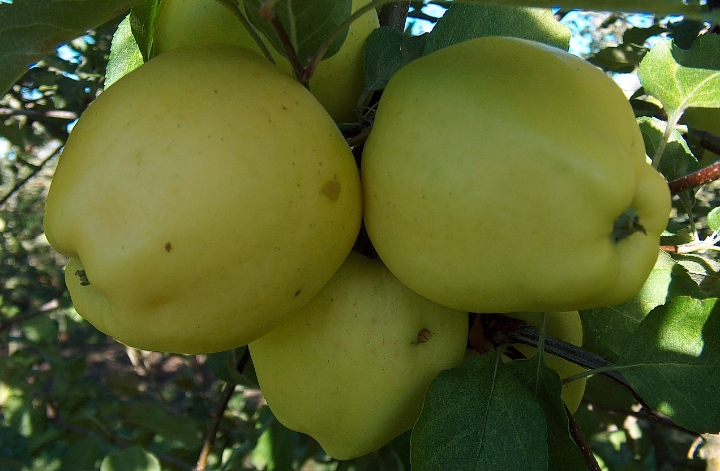
Ginger Gold apple was first discovered as a chance seedling in the orchard of Clyde and Ginger Harvey in Lovingston, Virginia, United States in the late 1960s. The apple was named after Ginger Harvey and was first introduced to the market in the early 1980s.
Ginger Gold is one of the earliest commercial apple varieties to ripen, bearing in August on the east coast (mid-July in North Carolina) and July in California. The fruit starts out a very pale green, though if left on the tree will ripen to a soft yellow. The skin often has some greenish blush or tint.
The flesh is white to cream-colored with aqueous consistency. When cut, the flesh oxidizes slowly to brownish color. The apple is initially tart when harvested, developing a sweeter, milder flavor with age. The apple can be consumed as a chewy snack, stirred into trail mix, or added to desserts.
Antonovka Apples
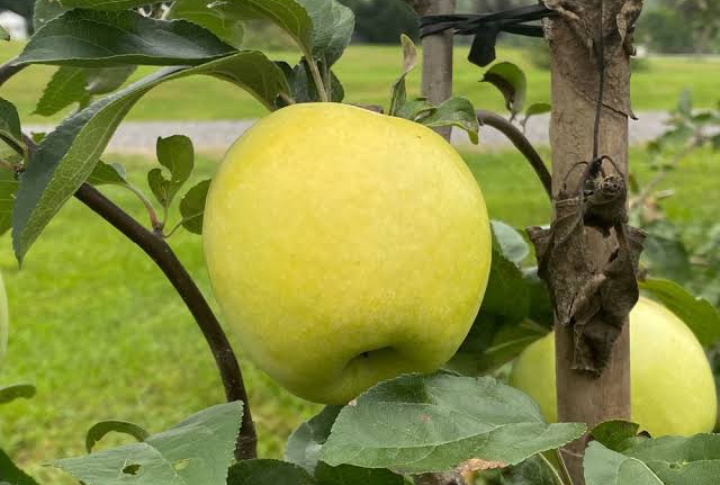
Antonovka apples were developed by Ivan V. Michurin, a Russian naturalist and plant breeder. Michurin cultivated the variety at his experimental orchard in the Tambov Oblast, Russia, and first introduced it in 1888.
The Antonovka apple is indeed popular in post-Soviet states, where it is sometimes referred to as “the people’s apple” (народное яблоко). The popularity is enhanced by its ability to sustain long harsh winters, a characteristic of many regions of Eastern Europe and Russia. The apple is commonly used making apple cider and juice.
The skin of the apple is usually green or yellowish-green with light russeting or small bumps. The color of the flesh is pale white to creamy yellow. When you take a bite, you’ll experience a juicy mouthfeel. The taste is characterized by a balance of sweetness and tartness. The apple’s tartness is usually compared to that of lemons or citrus fruits. As it ripens, the tartness gradually mellows.
Also Read: Different Types of Plums
Catshead Apples
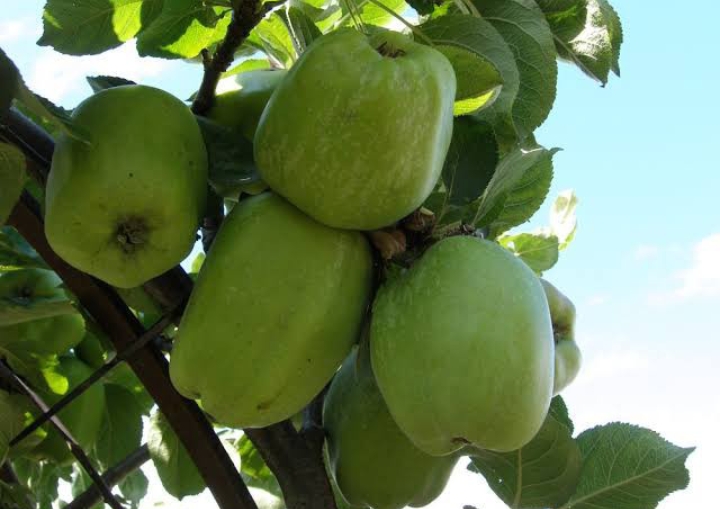
Catshead apples are believed to be native to England and are one of the oldest apple varieties still in existence in the country. They are also referred to as Catshead Crabapples or Catshead Old English apples.
The name comes from its alleged resemblance to a cat’s head – perhaps not immediately obvious, although the shape is unusually conical and can be ribbed. Like most old English apples Catshead is primarily a culinary apple.
The skin is lime green or greenish-yellow. The texture of the skin is often rough and bumpy. The flesh is firm and crunch when bitten into. The flavor intensifies as the apple matures, becoming more aromatic and tangy. The apples are available for harvest in the fall and can be stored through the late winter.
Lodi apples
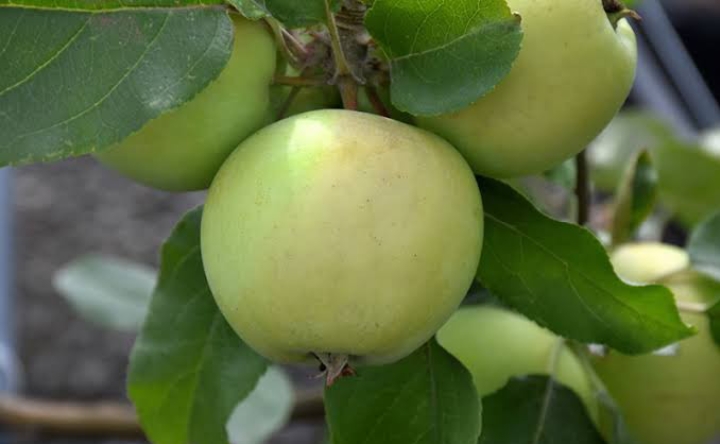
Lodi apple originated in the United States. It was developed by Professor E. S. Loomis at the New York State Agricultural Experiment Station in Geneva, New York, and was first introduced in 1924. Lodi apple is named after the town of Lodi, located in the Finger Lakes region of New York.
The apple has a pale green skin color with occasional light blush. It can sometimes develop a slight russeting. The flesh is tender and creamy white, and it has a refreshing, mildly tart flavor. They are commonly used in the production of applesauce, apple butter, pies and other baked goods.
Lodi apple is an early-maturing variety. It is not commercially cultivated due to its short shelf life and the flesh frequently cracking in storage. The apple has become a valued home garden variety particularly in the southern United States.
Bramley apples

Bramley apples are named after the village of Southwell Bramley in Nottinghamshire, England. They were developed in the 19th century and are one of the most well-documented heirloom English apple cultivars. They are widely grown and consumed in the United Kingdom.
Bramley apples characteristically have a greenish base and are sometimes blushed with faint red or yellow patches and striping. The skin also features grey-brown russet surrounding the stem cavity. When touch the top of the apple, it feels like a sandpaper-like. The flesh of the apple is white and firm.
Bramley apples are available in the mid-fall through early spring. Outside of the United Kingdom, they are produced in limited quantities in Canada, the United States, Denmark, Japan and Australia.
Calville Blanc d’Hiver Apples
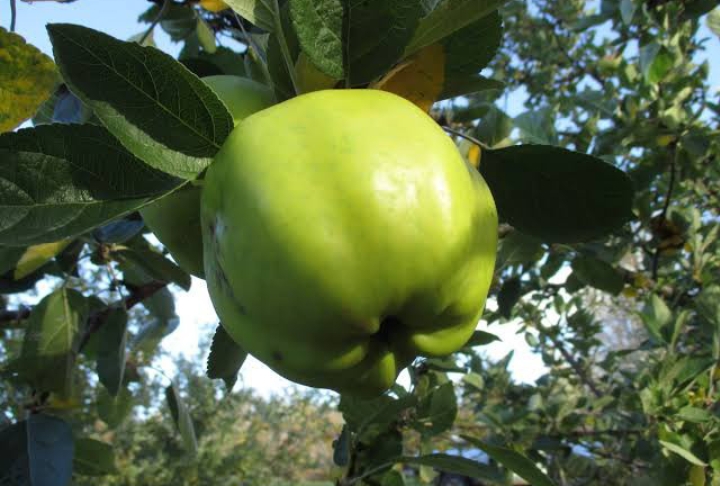
Calville Blanc d’Hiver apples are native to Europe and are an heirloom variety first documented in the late 16th century. It is easily recognizable due to its unusual shape. It has a flattened, irregularly ribbed appearance, often described as looking like a lumpy and misshapen large strawberry.
These apples are aromatic, and some people describe the scent banana-like scent. The apples are initially green in color and acidity when freshly harvested. With time in storage, the skin transitions into a golden yellow, and the flavor mellows, becoming sweeter.
Some notable growing regions include France, the United States (particularly in the Pacific Northwest and New England), and certain parts of Europe.
The apples are harvested between October and November. The apples have a relatively short storage life when compared to some other varieties but can be kept well through the winter months if handled properly.
Northern Spy apples
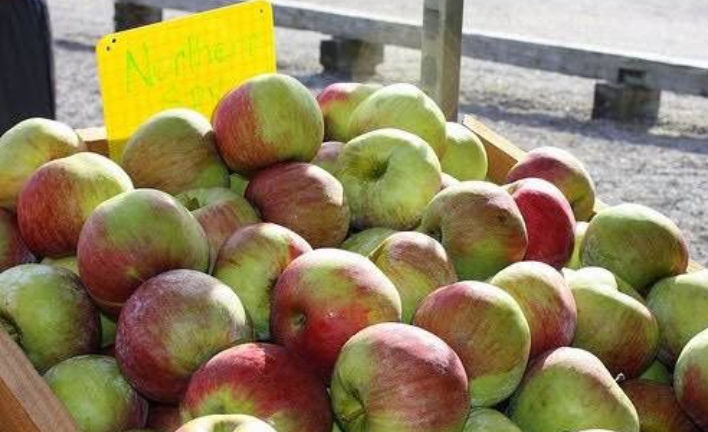
Northern Spy apples also called ‘Spy’ and ‘King’ were first discovered in East Bloomfield, New York, in the early 19th century. The exact origin of the variety is uncertain, but it is believed to be a chance seedling that was found in the orchard of Oliver Chapin. Since its discovery, the variety has spread to many parts of the United States and Canada.
Northern Spy produces fairly late in the season (late October and beyond). The skin is pale yellow-green, with occasional patches of red or pink blush. The flesh is yellow or creamy-white and dense with a tender consistency. The flesh releases an aromatic scent similar to cider. It also has a high sugar content mixed with some mild acidity.
This variety is a favorite among apple connoisseurs. The trees are vigorous and hardy. The trees are known to be long-lived and can grow to be quite large. They grow well in cooler regions.
Also Read: Different Types of Avocados
Ashmead’s Kernel
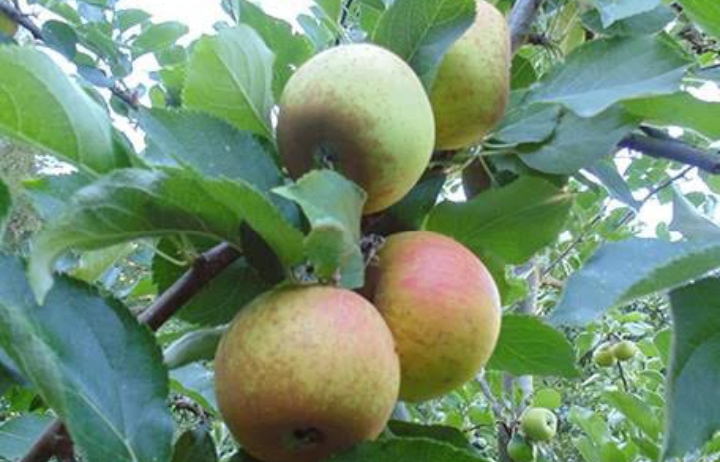
Ashmead’s Kernel originated in Gloucester, England, in the early 18th century. The exact reasons as to why it was developed are unclear, but it is named after lawyer, Dr. William Ashmead, who first propagated the apple.
The apple’s skin is tough skin and pale green or yellow in color with patches of orange or brownish russet covering the surface. The flesh is yellowish and juicy. Many apple enthusiasts consider this apple variety to be among most flavorful. The taste is a balance of sweet and tart, with some notes of citrus.
This is a late-season apple. It requires a longer growing season to develop its full flavor and sweetness. It also tends to ripen unevenly on the tree. It is often enjoyed as a dessert apple, eaten out of hand.
Today Ashmead’s Kernel apples are grown through specialty orchards and private gardens as a novelty in England, some regions of Europe, and the United States.
Shizuka apples
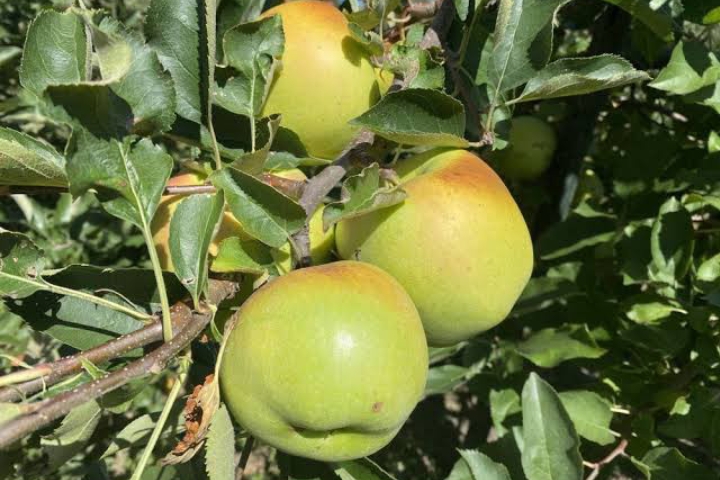
The Shizuka apple was developed by apple breeder Tsuneo Murakami in Japan. Murakami worked at the Aomori Apple Experiment Station, where he focused on breeding new apple varieties. The apple was first introduced to the market in 1986, after several years of testing and evaluation.
After its release, the cultivation of Shizuka apples expanded beyond Japan. The variety was also introduced to apple-growing regions in the United States, particularly in states such as Washington and New York where they are available from late September to early November.
A ripe fruit is entirely greenish-yellow resembling the hue of a Golden Delicious apple. There are patches or blushes of pale pink or red on the sun-exposed side of the fruit. The flesh is firm and juicy with moderate sweetness. The sweetness is often mellow and not overpowering.